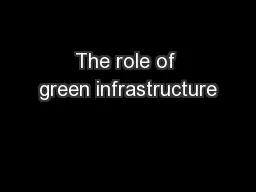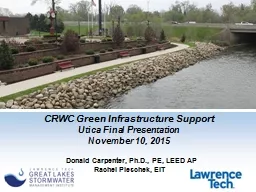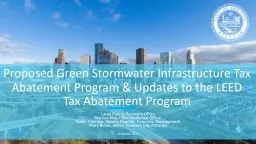PPT-The role of green infrastructure
Author : jane-oiler | Published Date : 2017-07-04
at the city scale Arturo CasalCampos Summary Water energy and sustainability Multifunctional green infrastructure Project overview Answers Water energy and sustainability
Presentation Embed Code
Download Presentation
Download Presentation The PPT/PDF document "The role of green infrastructure" is the property of its rightful owner. Permission is granted to download and print the materials on this website for personal, non-commercial use only, and to display it on your personal computer provided you do not modify the materials and that you retain all copyright notices contained in the materials. By downloading content from our website, you accept the terms of this agreement.
The role of green infrastructure: Transcript
Download Rules Of Document
"The role of green infrastructure"The content belongs to its owner. You may download and print it for personal use, without modification, and keep all copyright notices. By downloading, you agree to these terms.
Related Documents














